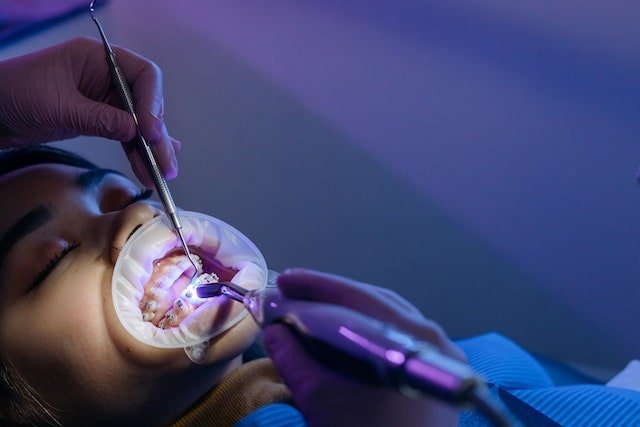Physical Address
304 North Cardinal St.
Dorchester Center, MA 02124
Physical Address
304 North Cardinal St.
Dorchester Center, MA 02124

What is the difference between an orthopaedic and an orthodontist (orthopaedic vs orthodontist)?
Orthopaedics and orthodontics are two terms that are quite similar but diagnose and treat different parts of the body.
While orthopaedics is a branch of medicine that involves correcting or preventing disorders of the bones, muscles, and joints, orthodontics is a speciality of dentistry concerned with the correction of misalignment of teeth.
In this article, we will be discussing more differences between orthopaedics and orthodontists.

Orthopaedics is a branch of medicine that focuses on preventing or correcting of disorders of the bone, muscles, and joints. In general, it’s a branch of medicine that focuses on treating the musculoskeletal system.
According to Pennmedicine.org, orthopaedic surgeons are health experts who specialize in the musculoskeletal system, which includes the bones, tendons, ligaments, muscles, and joints. These parts of the human body are essential for our everyday body movement.
The human body comprises over 200 bones, with tendons connecting every muscle to the bones in the body. Orthopaedic surgeons are essential health professionals in any healthcare system.
Also Read: Cavity vs Tooth Decay: Difference and Comparison
Orthodontics is a well-known speciality of dentistry that focuses on correcting misaligned teeth. It’s a dentistry treatment done to fix gaped or crooked teeth, underbite, overbite, and other dental-related issues.
Misaligned teeth and jaws are corrected with aligners and bracers.
Orthodontists work in a more specialized section of dentistry- giving more attention to a patient’s oral health. In dentistry, all orthodontics are dentists but you only find a few dentists who are orthodontics.
As healthcare professionals, orthodontists can diagnose misaligned teeth, jaws, overcrowded mouths, overbites, and occlusions. Once they are done with the diagnosis, the next step is to determine the appropriate treatment for the patient.

Orthopaedic surgeons are health experts who specialize in the musculoskeletal system, which includes the bones, tendons, ligaments, muscles, and joints. They are health professionals with licenses to diagnose and treat patients.
What do they really do?
Orthopaedic surgeons can;
Orthopaedic doctors are health professionals who are very familiar with the musculoskeletal system. Some orthopaedic surgeons may focus on subspecialty areas of orthopaedics such;
Also Read: Cavity vs Root Canal: Difference and Comparison
Orthodontists are healthcare experts in dentistry with a speciality in preventing or correcting misaligned teeth, jaws, overcrowded mouths, overbites, and occlusions.
We mentioned earlier that not all dentists are orthodontists but all orthodontists are dentists. A dentist can refer a patient to an orthodontist if the patient’s teeth or jaw are not aligned.
Now the job of the orthodontist is to diagnose the patient and recommend a method to correct the misaligned teeth. The orthodontist may recommend the patient use braces or other medical methods of strengthening the teeth.
The most essential part of an orthodontist’s job is to identify the issue affecting a patient’s mouth and teeth.
Having too many teeth in the mouth is an issue, especially for children. The orthodontist must remove any extra tooth to help create better spacing.
Orthodontists work with many medical tools to correct teeth misalignment. Correction teeth misalignment is mostly done with bracers- which is the most popular medical solution.
Bracers are bands that are used to encircle the teeth. The orthodontist will then bond the brackets in front of the teeth and the wire connects all the brackets and bands together.
This will pull the teeth into an upright alignment and it does strengthen the teeth over time.
An orthodontist can also recommend an aligner if bracers cannot be used to make corrections.
Becoming an orthopaedic surgeon requires intense training and certain qualifications. For example, orthopaedists in the United States complete at least 14 years of education and training.
The requirements to become an orthopaedist include;
Keep in mind that orthopaedic doctors are required to pass a certifying examination to confirm that they are proficient in the field of orthopaedics. The examination is issued by the American Board of Orthopaedic Surgery or the American Osteopathic Board of Orthopaedic Surgery.
Also Read: Filling vs Crown: Difference and Comparison
The requirements to become an orthodontist involve rigorous education and training.
Let’s explore the average annual salary of an orthopaedist and an orthodontist.
The average annual salary of an orthopaedist will depend on the state where they practice. Some states may be paying a higher salary compared to other states.
According to Salary.com, an orthopaedic surgeon in the United States earns an annual salary of $532,770, but the range falls between $418850, and $689,230.
The average annual salary for an orthopaedic surgeon may vary based on factors like certification, education, number of years in the field, and additional skills.
Also Read: Cavity vs Stain: Difference and Comparison
According to Indeed.com, the average national salary of an orthopaedic in the United States is $311,670 per year, with some salaries ranging from $224,146 to $433,370 annually.
Earning as an orthodontist also depends on factors like location, years if experience in the field, and additional certificates.
| Orthopaedics | Orthodontics | |
| Description | Orthopaedics is a branch of medicine that focuses on preventing or correcting disorders of the bone, muscles, and joints. | Orthodontics is a well-known speciality of dentistry that focuses on correcting misaligned teeth. |
| Expert in | Orthopaedic surgeons are health experts who specialize in the musculoskeletal system, which includes the bones, tendons, ligaments, muscles, and joints | Orthodontists are healthcare experts in dentistry with a speciality in preventing or correcting misaligned teeth, jaws, overcrowded mouths, overbites, and occlusions. |
| Medical field | Orthopaedics is a branch of medicine | Orthodontics is a speciality of dentistry |
Both orthopaedists and orthodontists are healthcare professionals with years of experience and can diagnose and treat patients. Orthodontics involves correcting and protecting misaligned teeth and jaws, while orthopaedics deals with preventing or correcting disorders of the bone, muscles, and joints.
Becoming a licensed orthodontist requires intense education and training. It requires going through undergraduate and graduate levels and orthodontic residency training. Orthopaedists also go through intense training and education.
We hope this article on the difference between orthopaedic vs orthodontist was helpful.